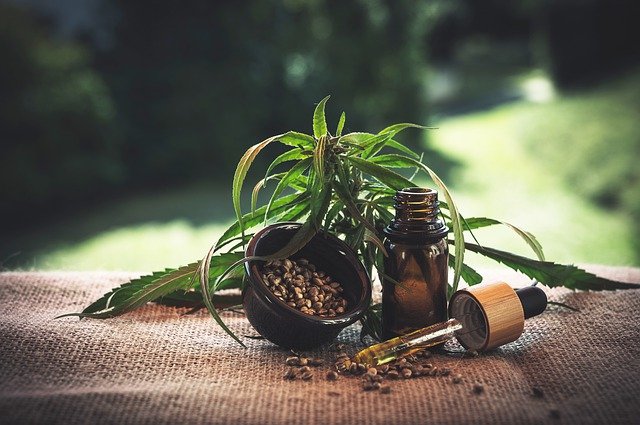Cannabis is in gray status in every state except two in the United States. The World Anti-Doping Agency has designated it as a banned substance in competition. Despite this, recent studies indicate that athletes are the second-most consumed drug behind alcohol. The evidence confirming cannabis’ contribution to athletic performance is still ambiguous.
Until objective evidence is compiled to reach a definitive conclusion on cannabis and athletics, the cannabis and athletics debate is likely to continue for years to come. Nevertheless, we thought it would be helpful to examine the topic objectively, exploring both sides of the discussion and why pro athletes are increasingly using marijuana.
What Is the Reason Athletes Use Cannabis?
Marijuana has become a popular choice among athletes for many reasons in recent years. Some athletes use cannabis to improve recovery time, others as a natural pain reliever, and many use microdoses to ease stress and anxiety or improve their focus and decision-making ability. Many high-octane sports athletes claim that cannabis helps them mentally prepare for competitions. Meanwhile, endurance athletes claim cannabis alters their perception of time before big races and marathons to induce runner’s high.
Benefits Of Combining Athletics And Cannabis
Some scientific and medical studies support the above claims, though most are anecdotal. Here’s what experts at Homegrown Cannabis Co. opinion on the subject;
- Research has shown that cannabis can increase tissue oxygenation, reduce muscle tightness, and help induce sleep faster, similar to why many athletes use it after competitions to recover.
- The use of cannabis is a proven analgesic, so replacing opioids with a healthier, more natural alternative would make sense for athletes.
- When we exercise and jog, our bodies produce euphoric chemicals such as anandamide, similar to the effects produced by cannabis consumption. These findings support the claim that runners and other endurance athletes take the substance to achieve a runner’s high before competitions.
A Review Of The Cons Of Using Cannabis and Athletics
Sports aren’t compatible with all of cannabis’ characteristics. This plant also has the following ill effects when ingested, most of which are detrimental to athletic performance:
- Coordination is impaired
- Spatial and time perception are distorted.
- Muscle contractions accelerate fatigue.
- Heart rate increases
- An inability to recall within a short timeframe
- Reaction times that are delayed
Furthermore, cannabis usage has not yet been scientifically proven to regulate or ease anxiety or stress. Some cannabis strains can cause users to feel uncomfortable and anxious instead of calming them down. Cannabis does not shift one’s mindset to a more competitive state, nor is there evidence that it can do so.
In Professional Sports In North America, What Is The Prevalence Of Cannabis Use?
It is almost unbelievable that marijuana use in professional sports in North America is so prevalent. According to former NBA power forward Kenyon Martin, 85% of professional basketball players regularly smoke marijuana. In the NFL, those numbers were even higher. Martellus Bennett, a retired tight end for the NFL, estimated that 89% of players use cannabis in 2018.
The retired Philadelphia Flyers enforcer Riley Cote, who is now a cannabis advocate and board member of the Pennsylvania Hemp Industry Council, revealed in 2017 that at least half of the NHL had used cannabis either for recreation or recovery purposes. Former NHL players have estimated that as much as 70% of the league is retired.
There’s a similar trend in Major League Baseball, which doesn’t test its players for marijuana consumption. Dirk Hayhurst, a former relief pitcher for the Baltimore Orioles, compared the cannabis consumption in MLB clubhouses to that of Cheech and Chong movies in 2014. According to him, the NFL was aware that its players consumed cannabis but chose to ignore the issue.
The Shifting Marijuana Policies Of Professional Sports Leagues
It is currently documented that 46.7% of member teams of the NBA, NFL, NHL, and MLB play in cities where recreational cannabis is legal, with the NHL leading the way at 56.2%! Given the current legalization efforts and the increasing social acceptance of cannabis in North America, that number may rise soon.
NHL And Collective Bargaining Agreement On Cannabis
The NHL has never included cannabis on its list of banned substances, choosing instead to help players who test positive for high levels of THC get treatment rather than refined and suspended them. The other three major sports leagues in North America started coming around to the same idea over the past 18 months.
With the NFL’s new collective bargaining agreement effective last year, even the NFL, a conservative and punitive employer, appears to have changed its policy on cannabis use among its employees.
Despite not removing cannabis from its list of prohibited substances, the NFL substantially shortened its testing period from four months to the first two weeks of training camp, increased its positive THC test threshold from 35 nanograms to 150, and eliminated its penal suspension system for cannabis violations. If a player tests positive for cannabis more than once, he may require reduced fines and treatment.
The NBA Marijuana Policy
The NBA hasn’t changed its policy on marijuana. However, the league has declared it will not test players for marijuana after the outbreak of COVID-19 started in September 2020 in Orlando. Since then, the policy change has remained in effect, and some insiders anticipate it may become a permanent change.
MLB No Endorsement On Cannabis Agreement
Cannabis was officially removed from Major League Baseball’s banned substances list in December 2019. Cannabis is now legal for players, but they cannot use it at work or sign any commercial agreement with cannabis companies while under its effects.
We Need More Research
It’s prohibited in the U.S., and its Schedule 1 status means scientists and medical research communities can’t access it. Legalization is reversing this trend, but we still know little about the properties, characteristics, and applications of cannabis. Research and studies on cannabis are therefore necessary. Furthermore, this data would provide consumers with detailed information about which strains, doses, cannabinoid ratios. Check out https://homegrowncannabisco.com/high-thc-seeds to learn more about the substance. In addition, consumption methods that are ideal for each sports discipline need to be furnished.



